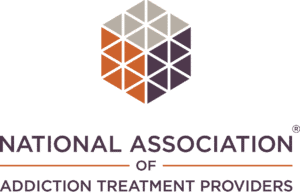In recent years, a veterinary medication named Xylazine, colloquially known as “Tranq” or the “Zombie Drug,” has emerged on the streets, posing significant health risks to humans due to its illicit use. Initially approved for veterinary purposes, this powerful animal tranquilizer is now a subject of concern for public health officials and addiction specialists alike due to its dangerous effects when misused by humans.
What is Xylazine?
Xylazine, a non-opiate sedative, analgesic, and muscle relaxant, is officially designated for easing handling, enabling medical procedures, and acting as a local anesthetic in veterinary medicine. Its effects include sedation, anesthesia, muscle relaxation, pain relief, and tranquility, making it invaluable for surgical procedures and diagnostic testing in animals such as dogs, cats, horses, and more. Despite its veterinary approval, Xylazine has been increasingly found in illegal substances, contributing to a host of health problems when used by humans.
The Journey from a Veterinary Solution to a Street Drug
Developed in 1962 and introduced in the early ’70s for veterinary use, Xylazine’s transition to the black market is a concerning evolution. Its illicit use involves being added to dangerous drugs such as heroin, fentanyl, and cocaine to increase their potency, often without the users’ knowledge. This shift not only exposes users to the drug’s potent effects but also to a range of severe health risks, including skin infections and lesions at injection sites.
Why is Xylazine Called a “Zombie Drug”?
The nickname “Zombie Drug” stems from its severe and potentially fatal side effects, including dangerously low blood pressure, respiratory depression, and bradycardia. Moreover, injecting Xylazine can lead to significant tissue damage, causing skin sores, ulcers, and infections that develop a scaly, necrotic tissue known as eschar, contributing to its “zombie” moniker. The drug’s ability to induce blackouts and extreme sedation further associates it with zombie-like symptoms, disorienting users and increasing the risk of severe health complications.
The Rise of Xylazine Use and Associated Risks
The misuse of Xylazine has seen a significant increase, driven by its availability, potency, and the alarming trend of it being cut into illicit drugs. Health professionals warn of the drug’s capacity to significantly increase the potency of opioids, potentially leading to overdose and resistance to overdose-reversing medications. Xylazine’s presence in the drug market has been linked to numerous overdose deaths across the United States, emphasizing the urgent need for awareness and intervention.
Side Effects and Signs of Use
The side effects of Xylazine vary in humans but notably include disorientation, drowsiness, blurred vision, skin ulcers, and in severe cases, coma, respiratory depression, and even death. Long-term use can lead to memory impairment, anxiety, and depression. Observing someone for mood swings, withdrawal from social activities, slurred speech, and the development of skin lesions can be indicative of Xylazine use.
Combating the Xylazine Crisis
Addressing the Xylazine crisis involves a multifaceted approach, including education, prevention, and treatment strategies. Public health experts recommend carrying naloxone, using test strips to detect Xylazine in substances, and not using drugs alone as ways to mitigate risks. Furthermore, finding treatment for substance misuse and starting a recovery journey are essential steps for individuals affected by Xylazine misuse.
In Conclusion
The emergence of Xylazine as a street drug is a distressing development, highlighting the need for concerted efforts to combat its spread and support affected individuals. Understanding the risks, identifying signs of use, and seeking professional help are critical components of addressing this public health challenge. As the “Zombie Drug” continues to impact communities, awareness and intervention become paramount in preventing further harm and fostering recovery.









